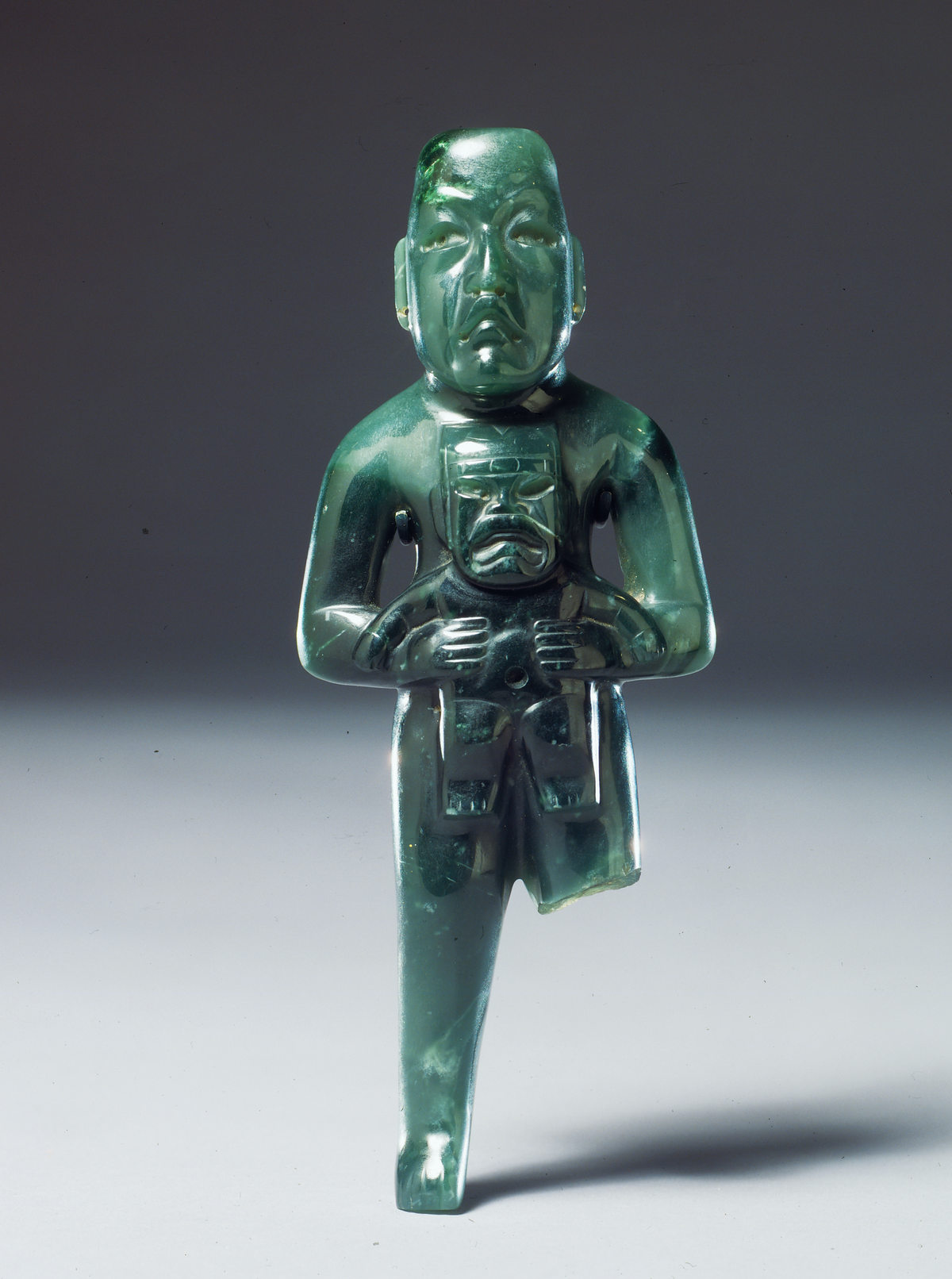The Kimbell Art Museum in Fort Worth, Texas, has acquired Standing Figure Holding a Were-Jaguar Baby (around 900BC-300BC), a jade statuette at the centre of Olmec civilisation studies since the mid-20th century. The acquisition celebrates the tenth anniversary of the museum’s Renzo Piano pavilion, where the figure will be exhibited as the centrepiece of the institution’s ancient American collection.
Following the statuette’s first modern documentation by a Mexican priest in 1829, it travelled to Paris as an heirloom of the aristocratic Chasseloup-Laubat family. It remained in France until it was purchased in 1947 by the American collector Alastair B. Martin. Upon its return to North America, the statuette was exhibited as a long-term loan to the Brooklyn Museum until 2014.
“By acquiring one of the most important cultural touchstones of Olmec art for the Kimbell, we can assure that it will forever remain on view, available to all who want to appreciate its beauty and cultural significance,” Kimbell director Eric Lee said in a statement.
While the 8.5in statuette pales in comparison to the colossal heads usually associated with the Olmec, its unique and refined details indicate rich artistry and ceremonial importance. Portrayed in jade is an Olmec ruler holding a baby were-jaguar, a supernatural half-man half-jaguar commonly depicted in Olmec art. The were-jaguar wears a headband symbolising the Olmec deity of rain and maize, and highlights the ruler’s authority as well as his shamanic abilities. The statuette is thought to be an object empowered with spiritual significance, and it would have been animated in rituals or buried alongside an owner or other sacred objects. The quality of the jade—a material the Olmec associated with sustenance, fertility, preciousness and long life—is also remarkable, with the clear, colourful, translucent surface a likely sign that the statuette was created by a highly skilled artist.
As Mesoamerica’s oldest civilisation, the Olmec had a direct and significant impact on the arts and culture in the region for millenia, influencing the Maya, Zapotec, Veracruz and Aztecs. Between roughly 1500BC and 300BC, the Olmec produced masks, tools, figures and ornaments from serpentine and jade, developing sophisticated techniques for refining and detailing these materials. Frequent depictions in Olmec art include important men, mythical figures and supernatural creatures combining attributes from humans and jaguars, eagles, serpents, alligators and sharks.
“Few Olmec objects have the history, aesthetic quality and iconographic significance of this superb jade figure,” Jennifer Casler Price, the Kimbell’s senior curator of Asian, African and ancient American art, said in a statement. “I am absolutely thrilled that we are able to add this incredibly eloquent sculpture to the ancient American collection.”


